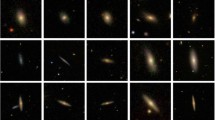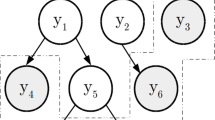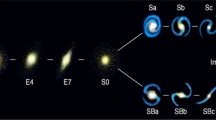Abstract
The numerous strategies for the automated morphological categorization of galaxies, which uses a variety of supervised machine learning techniques, have not been well examined or compared. As the majority of star galaxy classifiers in use today use condensed summary data from catalogues, rigorous feature extraction and selection are required. With the aid of Deep Convolutional Neural Networks (CNN), a development in machine learning, it may automate the process of feature detection from data by a computer, therefore lowering the demand for qualified human input. Low-level artificial classification has made great progress. While this is the case, Deep Learning consistently outperforms traditional computers. analyzing large datasets while learning. We examine three machine learning techniques for categorizing morphological galaxies: Support Vector Machines (SVM), Random Forests (RF), and Naive Bayes (NB). We examine the efficacy of several machine learning algorithms on each feature representation of a galaxy using a collection of morphological features produced by image analysis as well as the raw image pixel data compressed using PCA (Principal Component Analysis) into PCA features. According to our experiments, RF outperformed SVM and NB. The remainder of the time, morphological features outperformed our PCA features in performance. Thus, the current mechanism is not extremely scalable. A probabilistic classifier that can scale, is based on source data, and requires the least amount of human interaction is essential to resolving these problems.
Access this chapter
Tax calculation will be finalised at checkout
Purchases are for personal use only
Similar content being viewed by others
References
Jones, E., Singal, J.: Analysis of a custom support vector machine for photometric redshift estimation and the inclusion of galaxy shape information. Astron. Astrophys. 600, A113 (2017). https://doi.org/10.1051/0004-6361/201629558
Ibrahim, R.A., Elaziz, M.A., Ewees, A.A., Selim, I.M., Lu, S.: Galaxy images classification using hybrid brain storm optimization with moth flame optimization. J. Astron. Telesc. Instrum. Syst. 4(03), 1 (2018). https://doi.org/10.1117/1.JATIS.4.3.038001
Kormendy, J., Bender, R.: A proposed revision of the Hubble sequence for elliptical galaxies. Astrophys. J. 464(2), L119–L122 (1996). https://doi.org/10.1086/310095
Barchi, P., da Costa, F., Sautter, R., Rosa, R., Carvalho, R.: Improving galaxy morphology with machine learning. JCIS 7(3) (2016). https://doi.org/10.6062/jcis.2016.07.03.0114
Dai, J.-M., Tong, J.: Galaxy morphology classification with deep convolutional neural networks. Astrophys. Space Sci. 364(4), 55 (2019). https://doi.org/10.1007/s10509-019-3540-1
Khalifa, N.E.M., Taha M.H.N., Hassanien A.E., Selim, I.M.: Deep Galaxy: Classification of Galaxies Based on Deep Convolutional Neural Networks
Lal, D.V., et al.: Viewing classical radio galaxies with the upgraded GMRT and MeerKAT—a progress report. Galaxies 9(4), 87 (2021). https://doi.org/10.3390/galaxies9040087
Lin, J.Y.-Y., Liao, S.-M., Huang, H.-J., Kuo, W.-T.: Galaxy Morphological Classification with Efficient Vision Transformer
Lukic, V., Brüggen, M.: Galaxy classifications with deep learning. Proc. IAU 12(S325), 217–220 (2016). https://doi.org/10.1017/S1743921316012771
Nolte, L.W., Bilicki, M., Holwerda, B., Biehl, M.: Galaxy classification: a machine learning analysis of GAMA catalogue data. Neurocomputing 342, 172–190 (2019). https://doi.org/10.1016/j.neucom.2018.12.076
O’Keefe, P.J., Gowanlock, M.G., McConnell, S.M., Patton, D.R.: Star-Galaxy Classification Using Data Mining Techniques with Considerations for Unbalanced Datasets
Ramírez, G., García, R.: Classification of Galaxies Using Machine Learning Methods
Mahalakshmi, G.S., Swadesh, B., Aswin, R.R.V., Sendhilkumar, S., Swaminathan, A., Surendran, S.: Classification and Feature Prediction of Star, Galaxies, Quasars, and Galaxy Morphologies Using Machine Learning. In: Review (2022). https://doi.org/10.21203/rs.3.rs-1885343/v1
Shi, H.: Galaxy Classification with Deep Convolutional Neural Networks
Whyte, L.F., Abraham, R.G., Merrifield, M.R., Eskridge, P.B., Frogel, J.A., Pogge, R.W.: Morphological classification of the OSU bright spiral galaxy survey. Mon. Not. R. Astron. Soc. 336(4), 1281–1286 (2002). https://doi.org/10.1046/j.1365-8711.2002.05879.x
Awang Iskandar, D.N.F., et al.: Classification of planetary nebulae through deep transfer learning. Galaxies 8(4), 88 (2020). https://doi.org/10.3390/galaxies8040088
Kennamer, N., Kirkby, D., Ihler, A., Sánchez, J.: ContextNet: Deep Learning for Star Galaxy Classification (2018)
Archana, P., Saketh, B.: Galaxies classification using deep learning algorithm in convolutional neural networks. 10(5) (2020)
Author information
Authors and Affiliations
Corresponding author
Editor information
Editors and Affiliations
Rights and permissions
Copyright information
© 2023 The Author(s), under exclusive license to Springer Nature Switzerland AG
About this paper
Cite this paper
Sinha, A., Shahid, M., Nandan, A., Iwendi, C., Giri, A.K., Anand, S. (2023). A Novel Approach of Machine Learning Application in Astrophysics: Morphological Feature Wrapping Based Ensemble Method for Galaxy Shape Classification Using GAMA Dataset. In: Iwendi, C., Boulouard, Z., Kryvinska, N. (eds) Proceedings of ICACTCE'23 — The International Conference on Advances in Communication Technology and Computer Engineering. ICACTCE 2023. Lecture Notes in Networks and Systems, vol 735. Springer, Cham. https://doi.org/10.1007/978-3-031-37164-6_43
Download citation
DOI: https://doi.org/10.1007/978-3-031-37164-6_43
Published:
Publisher Name: Springer, Cham
Print ISBN: 978-3-031-37163-9
Online ISBN: 978-3-031-37164-6
eBook Packages: Intelligent Technologies and RoboticsIntelligent Technologies and Robotics (R0)




